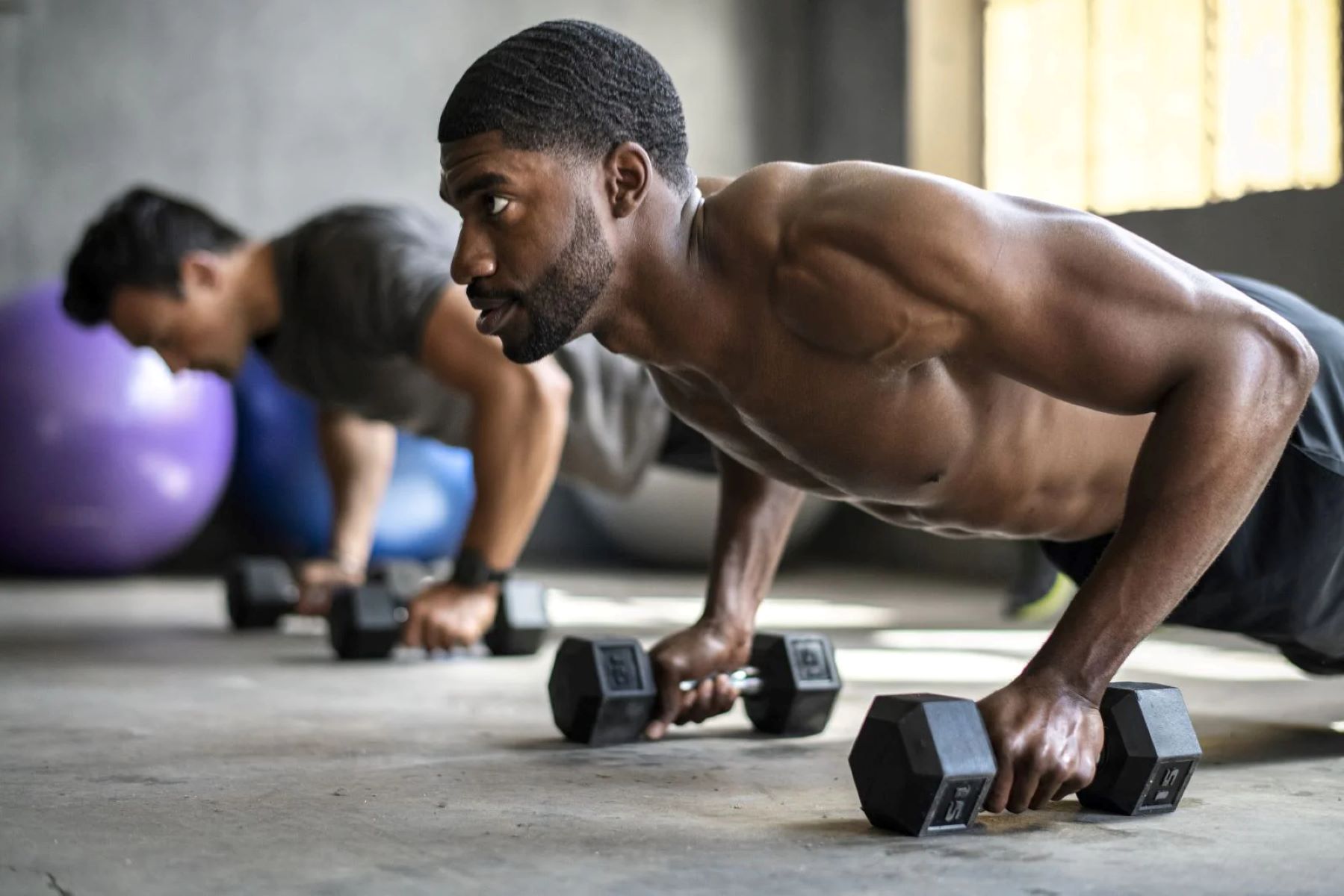

Featured
What Sport Requires Muscular Endurance
Modified: January 2, 2024
Looking to improve your muscular endurance for your favorite sport? Check out our featured article on what sport requires muscular endurance and how to enhance it!
Introduction
When it comes to sports, physical fitness is of paramount importance. One of the key components of fitness is muscular endurance. Muscular endurance refers to the ability of a muscle or a group of muscles to exert force repeatedly over an extended period of time without fatigue. It plays a crucial role in various sports, allowing athletes to sustain prolonged efforts, perform repetitive movements, and maintain consistent performance throughout a competition.
Understanding the concept of muscular endurance is essential for both athletes and fitness enthusiasts. By developing and improving muscular endurance, athletes can enhance their overall performance, reduce the risk of injury, and increase their stamina. Additionally, having good muscular endurance brings numerous health benefits, such as improved metabolism, increased bone density, and a reduced risk of chronic diseases.
Throughout this article, we will explore the definition of muscular endurance, its importance in sports, examples of sports that require high levels of muscular endurance, and effective training strategies to improve it. Whether you are a professional athlete, a weekend warrior, or simply interested in understanding how muscular endurance impacts sports performance, this article will provide you with the knowledge and insights you need.
Definition of Muscular Endurance
Muscular endurance refers to the ability of a muscle or a group of muscles to exert force repeatedly over an extended period of time without fatigue. It is different from muscular strength, which focuses on the maximum amount of force a muscle can generate in a single effort. Muscular endurance, on the other hand, focuses on the ability to perform multiple repetitions or sustain a contraction for an extended period without experiencing muscle fatigue.
Muscular endurance can be categorized into two types: local muscular endurance and cardiovascular endurance. Local muscular endurance refers to the ability of a specific muscle or muscle group to withstand fatigue during repetitive contractions. For example, the ability of the bicep muscles to perform multiple sets of bicep curls without exhaustion. Cardiovascular endurance, on the other hand, refers to the ability of the cardiovascular system, including the heart and lungs, to deliver oxygen-rich blood to the working muscles during prolonged exercise.
Both types of muscular endurance are essential in sports performance. Local muscular endurance allows athletes to sustain repetitive movements required in specific sports, such as swimming, rowing, and cycling. It helps maintain proper technique and form while preventing muscle fatigue. Cardiovascular endurance, on the other hand, is crucial in sports that involve continuous movements and activities, such as distance running, soccer, and basketball. It ensures that the muscles receive a constant supply of oxygen and nutrients, enabling athletes to maintain high-intensity efforts for an extended period.
Improving muscular endurance involves a combination of factors, including muscular strength, muscular endurance training, cardiovascular training, and proper nutrition. By consistently training and challenging the muscles, they adapt and become more efficient in performing repetitive tasks, delaying the onset of fatigue and improving overall endurance.
Importance of Muscular Endurance in Sports
Muscular endurance plays a crucial role in various sports and athletic activities. It is an important factor that differentiates successful athletes from the average ones. Here are several reasons why muscular endurance is essential in sports:
- Enhanced Performance: Muscles with good endurance can continue to perform at a high level of intensity for an extended period. This endurance allows athletes to maintain their performance throughout a competition, whether it’s running a marathon, swimming multiple laps, or performing a series of repetitive movements. It gives athletes the ability to push through fatigue and finish strong.
- Reduced Fatigue: Muscular endurance helps delay the onset of fatigue, allowing athletes to continue performing at their best for longer durations. Fatigue is one of the biggest obstacles in sports, leading to a decline in performance and an increased risk of injury. By improving muscular endurance, athletes can minimize fatigue and maintain proper technique, reducing the likelihood of making mistakes or succumbing to muscle fatigue.
- Injury Prevention: Muscular endurance is closely linked to injury prevention. When muscles tire and lose strength, other muscles and joints may compensate for the fatigue, leading to imbalances and potential injuries. With good muscular endurance, the muscles can sustain their strength and stability, reducing the risk of overuse injuries and musculoskeletal imbalances.
- Consistent Performance: Muscular endurance allows athletes to maintain a consistent level of performance throughout training sessions and competitions. It ensures that athletes can repeat movements with precision, execute techniques effectively, and sustain their effort without a significant decline in performance.
- Improved Stamina: Building muscular endurance also enhances overall stamina and the ability to withstand prolonged physical exertion. It improves the efficiency of the cardiovascular system, enabling better oxygen delivery to the muscles during intense activity. This increased stamina can make a significant difference in endurance-based sports, such as long-distance running, cycling, and endurance swimming.
Overall, muscular endurance is a key component of athletic performance. It allows athletes to maintain their performance, prevent injuries, and achieve optimal results in their respective sports. By incorporating training methods and strategies that enhance muscular endurance, athletes can elevate their performance to new heights.
Examples of Sports Requiring Muscular Endurance
There are several sports and athletic activities that heavily rely on muscular endurance. These sports involve repetitive movements, sustained efforts, and the ability to perform at a high level of intensity over an extended period. Here are some examples:
- Swimming: Competitive swimming requires exceptional muscular endurance, as swimmers need to continuously move their arms and legs to propel themselves through the water. The upper body muscles, including the shoulders, back, and arms, need to generate consistent force throughout the race, while the lower body muscles, such as the legs and core, provide stability and maintain a streamlined body position.
- Cycling: Both road cycling and mountain biking demand significant muscular endurance. Cyclists need to generate power consistently to pedal uphill, maintain speed on flat terrains, and endure long races. The leg muscles, particularly the quadriceps and hamstrings, play a vital role in generating force, while the core and upper body muscles provide stability and help with balance.
- Rowing: Rowing involves repetitive motions of pulling the oars through the water, requiring excellent muscular endurance. The rowers use their legs, core, and upper body muscles to generate power and propel the boat forward. Rowing competitions can last for several minutes, and rowers need to maintain their effort and technique throughout the race.
- CrossFit: CrossFit is a high-intensity workout discipline that combines various exercises and movements, such as weightlifting, cardiovascular exercises, and bodyweight movements. It tests an individual’s overall fitness, including muscular endurance. CrossFit workouts typically involve performing multiple sets and repetitions of exercises, challenging the muscles to endure fatigue and sustain effort throughout the workout.
- Soccer: Soccer players require muscular endurance to continuously run, change directions, and perform explosive movements throughout a match. They need to maintain a high level of intensity for an extended period, which puts significant demands on the leg muscles, core, and cardiovascular system.
- Boxing: Boxing is a sport that demands both cardiovascular endurance and muscular endurance. Boxers have to generate fast and powerful punches repeatedly while maintaining their defensive movements. This requires strong arm, shoulder, and core muscles, as well as a well-conditioned cardiovascular system to endure multiple rounds of intense activity.
These are just a few examples of sports that require muscular endurance. However, it is important to note that almost all sports benefit from good muscular endurance, as it enables athletes to perform at their best and maintain consistency throughout their chosen activity.
Training Strategies to Improve Muscular Endurance in Sports
To enhance muscular endurance and improve performance in sports, athletes need to incorporate specific training strategies into their workout routines. Here are some effective strategies to consider:
- Circuit Training: Circuit training involves performing a series of exercises with minimal rest in between. It targets multiple muscle groups and enhances both muscular endurance and cardiovascular fitness. Athletes can design circuit training workouts that mimic the movements and intensity of their respective sports, making it a specific and efficient training method.
- High-Rep Resistance Training: Incorporating high-repetition resistance training into a workout routine can help increase muscular endurance. By using lighter weights and performing 15-20 repetitions per set, athletes can stimulate the endurance fibers within their muscles, improving their ability to sustain contractions over a prolonged period.
- Interval Training: Interval training alternates between periods of high-intensity exercise and periods of lower intensity or rest. This type of training challenges both the cardiovascular system and muscular endurance. Athletes can perform interval training by incorporating bursts of intense effort followed by short recovery periods, simulating the demands of their sport.
- Progressive Overload: Gradually increasing the intensity, duration, or workload of training sessions helps promote muscular endurance. By systematically progressing the difficulty of workouts over time, athletes continually challenge their muscles and stimulate adaptations that improve endurance. This can be done by increasing the number of sets, repetitions, or resistance for resistance training exercises or by increasing the distance or speed for cardiovascular exercises.
- Sport-Specific Drills: Incorporating sport-specific drills into training allows athletes to practice the movements and demands of their sport while improving muscular endurance. By replicating the actions and intensities experienced during competition, athletes can enhance their ability to sustain effort and improve overall performance.
- Proper Nutrition and Hydration: Consuming a balanced diet that provides adequate fuel to support training and recovery is crucial for improving muscular endurance. Carbohydrates provide the primary energy source during exercise, while protein is essential for muscle repair and growth. Staying properly hydrated is also important for maintaining endurance and preventing fatigue during training sessions and competitions.
It is important to note that while these training strategies are effective for improving muscular endurance, they should be tailored to each individual’s specific needs, sport, and fitness level. Working with a qualified coach or trainer can help design a personalized training program that maximizes results.
Conclusion
Muscular endurance is a vital component of athletic performance in a wide range of sports. It allows athletes to sustain repetitive movements, maintain high-intensity efforts, and perform at their best for extended periods. By understanding the importance of muscular endurance and implementing effective training strategies, athletes can enhance their overall performance and achieve their goals.
Developing muscular endurance requires a combination of targeted exercises, progressive overload, sport-specific drills, and proper nutrition and hydration. Training methods such as circuit training, high-repetition resistance training, interval training, and sport-specific drills can help improve endurance and prepare athletes for the specific demands of their sports.
Furthermore, it’s essential to emphasize the significance of proper rest and recovery in the training process. Muscles need adequate time to heal and rebuild after intense workouts to adapt and become stronger. Balancing training with rest and recovery allows athletes to avoid overtraining and reduce the risk of injury.
Whether you’re an aspiring athlete or a recreational sports enthusiast, understanding the role of muscular endurance in sports can help you optimize your performance and achieve your desired outcomes. By incorporating the training strategies mentioned in this article and maintaining a consistent and dedicated approach, you can develop the muscular endurance necessary to excel in your chosen sport.
So, start incorporating muscular endurance training into your workout routine, fuel your body with proper nutrition, and prepare yourself for success on the field, court, track, or wherever your sports journey takes you!







